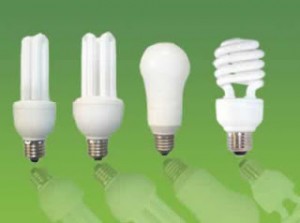 By Mary Campbell,
By Mary Campbell,
Pinellas County Extension Director, Urban Sustainability
Making a commitment to change future practices is an important step to sustainable living. If you make a commitment to a new practice you are much more likely to follow through and make that practice part of your daily habits. Many sustainable practices are not difficult, we just have to remember.
Compact fluorescent light bulbs use 75% less energy and last 10 times longer than standard incandescent bulbs. If every American home replaced just one light bulb with an ENERGY STAR qualified bulb, we would save enough energy to light more than 3 million homes for a year, more than $600 million in annual energy costs, and prevent greenhouse gases equivalent to the emissions of more than 800,000 cars. (EPA, 2008)
As energy costs rise and we work to reduce our carbon footprint, what could be easier than changing out a few light bulbs to compact fluorescent lights (CFL). Although initially more expensive, you will save about $30 or more in electricity costs over each bulb’s lifetime. Energy-efficient CFLs can be used in recessed fixtures, table lamps, track lighting, ceiling fixtures and porch lights. Replacing a single incandescent bulb with a CFL will keep a half-ton of CO2 out of the atmosphere over the life of the bulb.To choose the ENERGY STAR qualified CFL with the right amount of light, find a CFL that is labeled as equivalent to the incandescent bulb you are replacing. Light bulb manufacturers include this information right on the product packaging to make it easy for consumers to choose the equivalent bulb.
CFLs contain a small amount of mercury and should be disposed of properly, ideally recycled. Although household CFL bulbs may legally be disposed of with regular trash (in most US states), they are categorized as household hazardous waste. Because CFLs also help to reduce greenhouse gasses, other pollutants associated with electricity production, and landfill waste (because the bulbs last longer), they are clearly the environmental winner when compared to traditional incandescent light bulbs. EPA recommends that consumers take advantage of available local recycling options for compact fluorescent light bulbs. EPA is working with CFL manufacturers and major U.S. retailers to expand recycling and disposal options. Consumers can contact their local municipal solid waste agency directly, or go to www.epa.gov/bulbrecycling to identify local recycling options.
Take the Check Your Green Commitment Pledge at: http://origpledge.awardspace.com/
Resource: EPA Compact Flourescent Light bulbs http://www.energystar.gov/index.cfm?c=cfls.pr_cfls
 0
0
